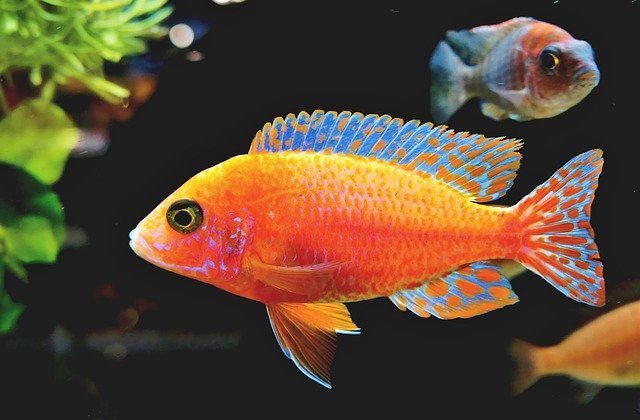
You may think that learning to fish is an insurmountable challenge, but the truth is that mastery of the hobby is well within reach. Simply learning a few tips about equipment, bait, and locations can make a significant difference. Check out this article to make learning to fish easy and fun.
Most night fisherman use lighted bobbers. A lighted bobber includes a miniature bulb so that it is possible to see your line when a fish is biting. The bite of a fish will cause the bobber to move vertically, as usual, and the fisher will be alerted by the light’s movement.
No other single piece of equipment is as important as a sharp hook when it comes to fishing. A sharp hook ensures that the fish stays on the line while you reel it in. Check your hooks’ sharpness regularly. Sharpen or replace them prior to a fishing trip before they become dull.
Whenever you fish, always be mindful of where the birds are. If you find that the birds are flocking to one specific area, there is a good chance there are many fish there. Birds are diving to catch fish to eat. Watch the birds’ behavior often, and see what clues they can give you to help improve your fishing day.
Bring your camera with you so you can show people the fish you caught before putting them back in the water. This fish will remain alive and you can have proof of your fishing experience, when you bring along a camera.
With freshwater fishing, a good technique is to cast your line near the shoreline around rivers and lakes for good results. Fish who feed on insects tend to stay near the shore, as this is where the most food is found. Just watch out for the grass and weeds!
You can make your earthworms even more appetizing to a fish by allowing them to plump up. Just place some worms in a newspaper lined box and place it in the fridge overnight. Due to the cool temperature and the increased humidity, the worms will become much plumper.
Wet your line before tying a knot. This will cut the friction as you tie your knot, but it is also going to make your knot much stronger. Try a clinch or double fisherman’s knot.
A sharp fishing hook is essential when fishing. If the hook scratches your fingernail, it’s sharp enough. If it is not sharp, and you still want to catch fish, you can either sharpen the hook or get another one.
When fishing, pay attention to the wind currents. Generally, when wind causes a current, the fish will flow with that current. When casting, throw into the wind. However, if winds are too strong, fish will stay at lake bottom where they are not visible.
Avoid fly fishing when it’s windy. Intense wind will cause inaccuracy in your casts. It is best to fish during mornings or evenings since the wind should not be blowing at these times of the day. If you notice the wind is blowing, turn your back to the wind.
It is crucial when you go fishing on a boat that you know what the maximum capacity is. Tipping the boat in the middle of the lake and losing everything you have would be a disaster, potentially even fatal. Stay far under the weight capacity in order to be as safe as possible.
Sea sickness pills are a must for any deep sea fisherman. There are few things more horrible than being stuck on a ship, far from shore, with a stomach that is churning more than the turbulent waves of the ocean. You will have more fun and have a better catch if you remember to bring along seasickness meds or wear a wrist band that prevents sea sickness.

Stay calm when you are wrestling with a big fish. Avoid reeling in a fish while it is actively swimming away. Don’t exert too much pressure; let the drag created by the force of your rod do the heavy lifting. Set your drag only once your hook is fully set in your fish. Always make sure that your rod is aimed towards the fish at about a 45 degree angle.
You should almost always use a sinker whenever you are fishing in the winter. Using sinkers weighs down your line, letting the bait sink deep into the less-frigid water where fish hide out during the winter. The weight of sinkers on your fishing line will depend on the depth of water.
Catch-and-release is an ideal strategy for anyone who does not plan to actually keep and cook the fish. This involves unhooking your fish carefully as you release them back to the water. Releasing the fish back into the wild gives the entire population a chance to grow, which means more chances for you to catch fish in the future.
It can be very beneficial to learn a couple of knot-tying techniques before you start fishing. A well tied knot will keep your hook tightly attached to the line when you catch a fish. It will also make it easier for you to switch equipment. Once you get the hang of your knots, it will be easy to alternate your fishing gear successfully.
If your favorite lure is letting too many fish get by you, consider checking your hooks. It’s easy to forget that well-used hooks can be twisted or blunted from use, resulting in the loss of fish. Switching your hooks is a great way to make sure that your lures set cleanly and quickly.
Never leave trash in the waters where you fish. Trash harms the fish, plant life and destroys the beautiful environment. Always clean up after yourself in order to preserve the water and wilderness for future generations of fishing enthusiasts, and to avoid facing possible fines if you are caught.
Anyone who fishes should keep their line out in the water as much as possible. You might be surprised when you find out how much time is spent untangling line, changing lures, and doing other tasks. The only way to catch fish is by having your line in the water.
If you want to return the fish that you caught to the water, and are worried about having a souvenir to take with you to show people the prize you caught you should take a camera. This way you can spare the life of a fish you are not interested in consuming and have your memento of it as well.
Talking with locals is a great way to learn about a new fishing area. Purchase some local made fishing flies or just buy a hat, but most important, you should be friendly. Regulars in the area will find your interest appealing, and be more likely to open up to you. They can supply you with all the tips you need to be really successful.
There is no guaranteed fool-proof bait. To get the best results, know when and how to properly use a grub, jig or worm. Jigs will work wonders for you in water that is a little murky, as the motion will attract the fish. Colorful plastic bait worms are best for clear water where they are visible.
Always be aware of your surroundings as well as the forecast for weather. Planning a fishing trip only to have it rain the entire time will ruin your day. Always put safety first, and be sure to check the weather forecast before you take off on your fishing excursion.
Fishing can be a fun hobby for many different people. Fishing alone, with family and friends are all viable options when it comes to fishing. Any time you spend outdoors helps you to improve your fishing skills. Make good use of these tips, and you can go out for your first fishing trip today!

